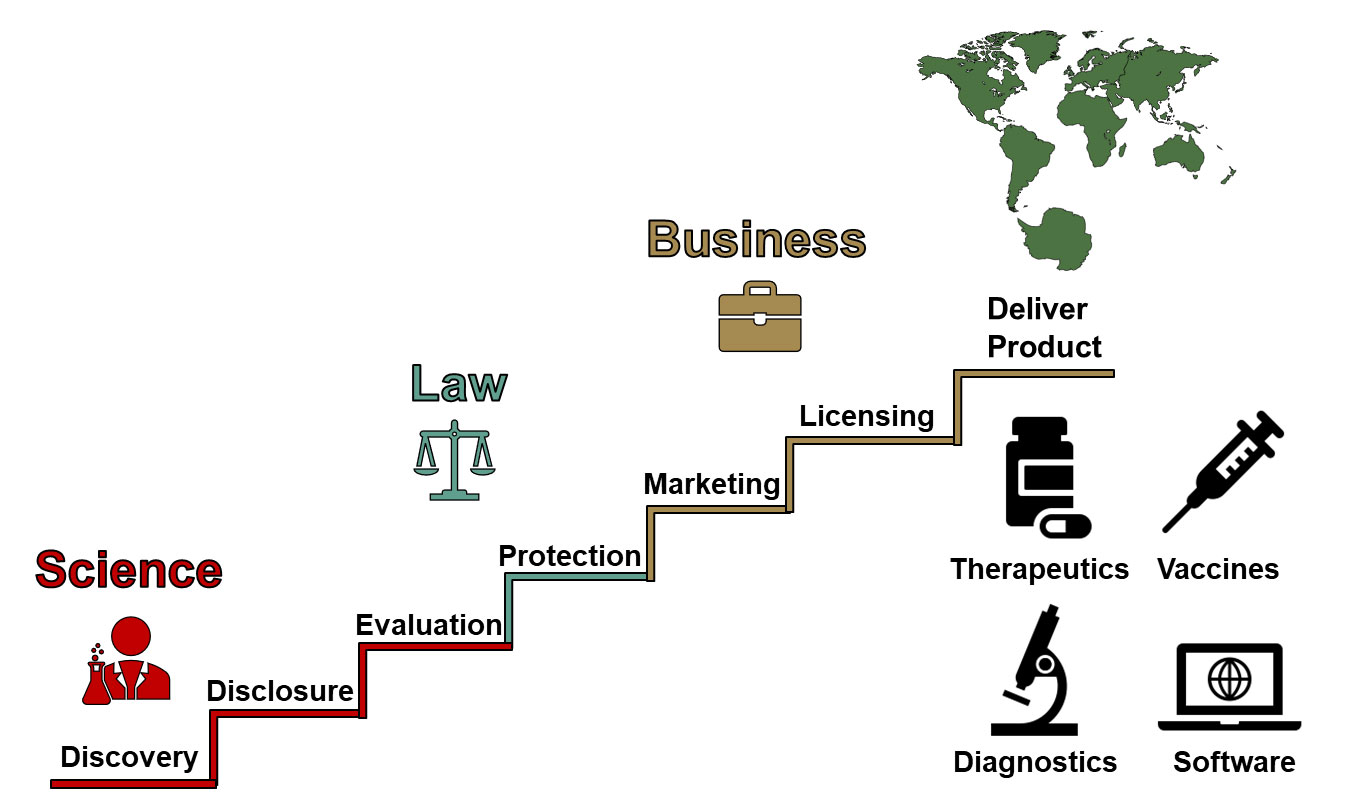Report on the Green Electronics Manufacturing Market: Growth, Trends, and Alignment with Sustainable Development Goals (SDGs)
Executive Summary
The global green electronics manufacturing market is undergoing exponential growth, projected to expand from $16.81 billion in 2024 to $46.53 billion by 2029, at a compound annual growth rate (CAGR) of 22.5%. This expansion is fundamentally linked to the global pursuit of the Sustainable Development Goals (SDGs), driven by stringent environmental regulations, technological innovation, and a significant shift in consumer and corporate behavior towards sustainability. The sector’s development is a direct contributor to several SDGs, most notably SDG 12 (Responsible Consumption and Production), SDG 9 (Industry, Innovation, and Infrastructure), SDG 7 (Affordable and Clean Energy), and SDG 11 (Sustainable Cities and Communities).
Market Growth and Projections
Historic and Forecasted Growth
The market demonstrated substantial growth in the historic period, increasing from $16.81 billion in 2024 to an estimated $20.66 billion in 2025, reflecting a CAGR of 22.9%. This momentum is expected to continue, with a forecast value of $46.53 billion by 2029. This robust economic expansion within a sustainable sector directly supports SDG 8 (Decent Work and Economic Growth) by creating value in an environmentally responsible industry.
- 2024 Market Size: $16.81 Billion
- 2025 Estimated Market Value: $20.66 Billion
- 2029 Forecasted Market Value: $46.53 Billion
- Forecast Period CAGR (2025-2029): 22.5%
Key Market Drivers and their Connection to SDGs
The market’s trajectory is propelled by several factors that are intrinsically aligned with the Sustainable Development Goals.
- Increasing Demand for Sustainable Electronics: Growing consumer awareness of the environmental impact of electronic waste (e-waste) is a primary driver. This shift aligns with SDG 12 (Responsible Consumption and Production), as consumers actively seek products designed for minimal environmental harm. A 2024 report indicated that sustainable electronics’ share of consumer packaged goods rose from 17.3% in 2022 to 18.5% in 2023.
- Stricter Environmental Regulations: Government mandates and international policies aimed at reducing e-waste and hazardous materials push manufacturers towards greener processes, reinforcing SDG 12 and SDG 13 (Climate Action).
- Rising Concerns Over E-Waste: The rapid replacement cycle of electronics has led to a surge in discarded devices containing toxic materials like lead, mercury, and cadmium. Addressing this challenge is crucial for SDG 11 (Sustainable Cities and Communities) by preventing soil and water contamination and for SDG 3 (Good Health and Well-being) by mitigating health risks from environmental pollution.
- Corporate Social Responsibility (CSR) Initiatives: Companies are increasingly adopting sustainable practices to enhance their brand reputation and meet stakeholder expectations, contributing to SDG 12.
Technological Innovation and Industry Trends Advancing Sustainability
Technological advancements are at the forefront of the green electronics transition, enabling progress on multiple SDG targets.
Energy Efficiency and AI-Driven Manufacturing
Innovations in energy efficiency are critical for reducing the environmental footprint of both manufacturing and product use. This directly supports SDG 7 (Affordable and Clean Energy) and SDG 13 (Climate Action).
- In May 2023, Infineon Technologies AG launched its ‘ALL2GaN’ project, developing gallium nitride (GaN) chips that improve energy efficiency by 30% and are projected to reduce CO2 emissions by 218 million tons.
- The ‘AIMS5.0’ project by Infineon utilizes artificial intelligence (AI) to optimize resource-efficient manufacturing, embodying the principles of SDG 9 (Industry, Innovation, and Infrastructure) by upgrading industrial processes for sustainability.
Future Trends in Sustainable Manufacturing
Anticipated trends focus on deepening the commitment to a circular economy and minimizing environmental impact, further supporting SDG 9 and SDG 12.
- Development of biodegradable electronic components
- Advanced e-waste recycling technologies
- Expansion of flexible and organic electronics
- Use of sustainable 3D printing for circuit boards
- Increased adoption of circular economy principles
Market Landscape and Key Players
Major Companies Driving Sustainable Innovation
Leading corporations are actively innovating to reduce their environmental impact and promote sustainability across their value chains. These efforts are central to achieving the industry-wide shift required by the SDGs. Key players include:
- Apple Inc.
- Dell Technologies Inc.
- Sony Corporation
- Siemens AG
- Lenovo
- LG Electronics Inc.
- HP Inc.
- Koninklijke Philips N.V.
- STMicroelectronics N.V.
- Fairphone
1. Which SDGs are addressed or connected to the issues highlighted in the article?
SDG 7: Affordable and Clean Energy
- The article emphasizes the development of energy-efficient technologies and energy conservation measures within the electronics manufacturing sector. This directly relates to ensuring access to affordable, reliable, sustainable, and modern energy.
SDG 9: Industry, Innovation, and Infrastructure
- The text focuses on the growth of the “green electronics manufacturing market,” driven by innovations like “AI-driven energy-efficient manufacturing,” “advanced e-waste recycling technologies,” and the use of “eco-friendly materials.” This aligns with building resilient infrastructure, promoting inclusive and sustainable industrialization, and fostering innovation.
SDG 12: Responsible Consumption and Production
- This is a central theme. The article discusses the entire lifecycle of electronics, from “sustainable electronics” design and manufacturing to managing “e-waste.” It highlights the shift towards “circular economy practices,” “waste reduction techniques,” and using “recycled plastics” and “biodegradable electronic components,” all of which are core to ensuring sustainable consumption and production patterns.
SDG 13: Climate Action
- The article connects green manufacturing practices to climate action by mentioning the goal of “carbon footprint reduction.” It provides a specific example of new technology leading to a significant reduction in “CO2 emissions,” which is a direct measure to combat climate change.
SDG 17: Partnerships for the Goals
- The article provides a clear example of multi-stakeholder collaboration. It describes a project launched by Infineon Technologies AG involving “98 partners from 18 countries” with funding from “both industry and government sources,” illustrating the type of partnership needed to achieve sustainable development.
2. What specific targets under those SDGs can be identified based on the article’s content?
SDG 7: Affordable and Clean Energy
- Target 7.3: By 2030, double the global rate of improvement in energy efficiency.
- The article supports this target by highlighting “advancements in energy-efficient technologies” and “energy conservation measures” as key drivers of the market. The example of Infineon’s GaN chips, which “enhance energy efficiency by 30%,” is a direct contribution to this target.
SDG 9: Industry, Innovation, and Infrastructure
- Target 9.4: By 2030, upgrade infrastructure and retrofit industries to make them sustainable, with increased resource-use efficiency and greater adoption of clean and environmentally sound technologies and industrial processes.
- This target is addressed through the article’s focus on the “green electronics manufacturing market,” which inherently involves retrofitting an industry to be more sustainable. Mentions of “AI-driven energy-efficient manufacturing,” “sustainable 3D printing for circuit boards,” and the use of “eco-friendly materials” are all examples of adopting clean technologies.
SDG 12: Responsible Consumption and Production
- Target 12.4: By 2020, achieve the environmentally sound management of chemicals and all wastes throughout their life cycle… and significantly reduce their release to air, water and soil.
- The article directly relates to this by discussing the problem of e-waste containing “harmful substances such as lead, mercury, and cadmium” that can “contaminate soil and water.” The development of “lead-free” and “halogen-free” technologies and “advanced e-waste recycling technologies” are strategies to achieve this target.
- Target 12.5: By 2030, substantially reduce waste generation through prevention, reduction, recycling and reuse.
- This target is central to the article. It is supported by the discussion of “expanding adoption of circular economy practices,” “waste reduction techniques,” “advanced e-waste recycling technologies,” and the development of “recyclable computer components” and “recycled-material smartphones.”
SDG 13: Climate Action
- Target 13.2: Integrate climate change measures into national policies, strategies and planning.
- While not about national policies, the article shows the integration of climate measures into corporate and industry-wide strategies. The focus on “carbon footprint reduction” and the specific example of a project aiming to reduce “CO2 emissions by 218 million tons” demonstrate how the industry is internalizing climate action goals.
SDG 17: Partnerships for the Goals
- Target 17.17: Encourage and promote effective public, public-private and civil society partnerships.
- The article provides a concrete example of this target in action with the Infineon project, which involved “98 partners from 18 countries” and received funding from “both industry and government sources,” including the “European Key Digital Technologies program.”
3. Are there any indicators mentioned or implied in the article that can be used to measure progress towards the identified targets?
For Target 7.3 (Energy Efficiency)
- Indicator: The percentage improvement in energy efficiency of new technologies.
- The article states that Infineon’s GaN chips “enhance energy efficiency by 30%,” providing a quantifiable metric.
For Target 9.4 (Sustainable Industry)
- Indicator: The market size and growth rate of green industries.
- The article provides precise figures: the market is projected to grow from “$16.81 billion in 2024 to $46.53 billion by 2029” at a “compound annual growth rate (CAGR) of 22.5%.” This financial data serves as an indicator of the adoption rate of sustainable industrial technologies.
For Target 12.4 (Chemicals and Waste Management)
- Indicator: The adoption of technologies that eliminate hazardous materials.
- The article mentions the development of “lead-free” and “halogen-free” technologies, which directly indicates progress in reducing the use of specific harmful chemicals.
For Target 12.5 (Waste Reduction)
- Indicator: The market share of sustainable products.
- The article cites a report that “sustainable electronics accounted for approximately 18.5% of consumer packaged goods (CPG) in 2023, up from 17.3% in 2022,” providing a clear, measurable indicator of the shift in consumption patterns that drives waste reduction.
For Target 13.2 (Climate Action Integration)
- Indicator: Amount of CO2 emissions reduced by new technologies or processes.
- The article quantifies the impact of Infineon’s project, which is projected to reduce “CO2 emissions by 218 million tons.”
For Target 17.17 (Partnerships)
- Indicator: The scale and investment in multi-stakeholder partnerships.
- The article specifies the details of a partnership: “98 partners from 18 countries” with a “total investment of 130 million euros.” These numbers serve as an indicator of the scale and financial commitment of the partnership.
4. Summary Table of SDGs, Targets, and Indicators
| SDGs | Targets | Indicators |
|---|---|---|
| SDG 7: Affordable and Clean Energy | 7.3: Double the global rate of improvement in energy efficiency. | Percentage improvement in energy efficiency of new technologies (e.g., “enhance energy efficiency by 30%”). |
| SDG 9: Industry, Innovation, and Infrastructure | 9.4: Upgrade infrastructure and retrofit industries to make them sustainable… with greater adoption of clean and environmentally sound technologies. | Market size and growth rate of green industries (e.g., market growth to “$46.53 billion by 2029” at a “CAGR of 22.5%”). |
| SDG 12: Responsible Consumption and Production | 12.4: Achieve the environmentally sound management of chemicals and all wastes throughout their life cycle. | Adoption of technologies that eliminate hazardous materials (e.g., “lead-free” and “halogen-free” technologies). |
| 12.5: Substantially reduce waste generation through prevention, reduction, recycling and reuse. | Market share of sustainable products (e.g., “sustainable electronics accounted for approximately 18.5% of CPG in 2023”). | |
| SDG 13: Climate Action | 13.2: Integrate climate change measures into… strategies and planning. | Amount of CO2 emissions reduced (e.g., “reducing CO2 emissions by 218 million tons”). |
| SDG 17: Partnerships for the Goals | 17.17: Encourage and promote effective public, public-private and civil society partnerships. | Scale and investment in partnerships (e.g., a project with “98 partners from 18 countries” and “130 million euros” investment). |
Source: finance.yahoo.com







